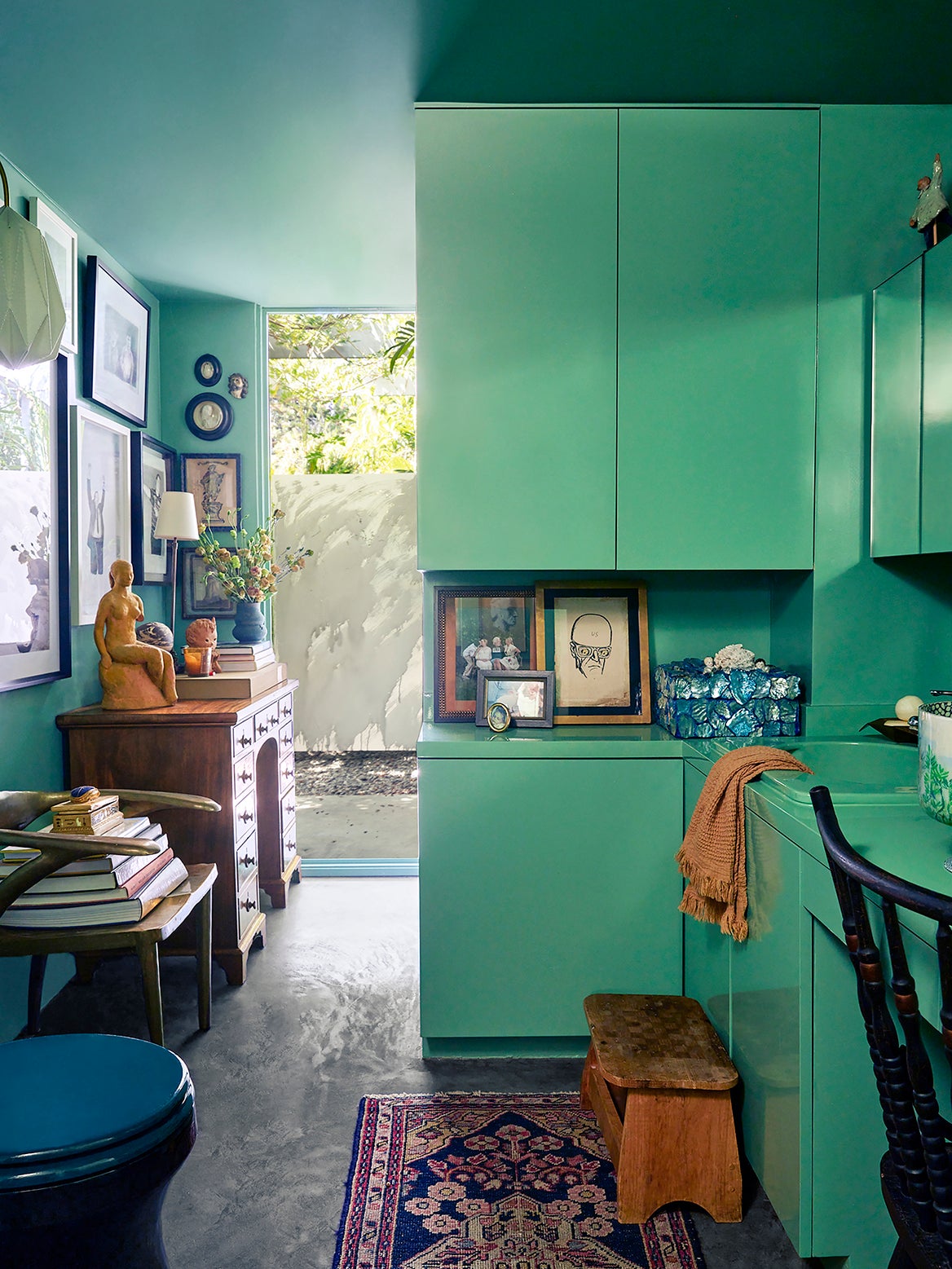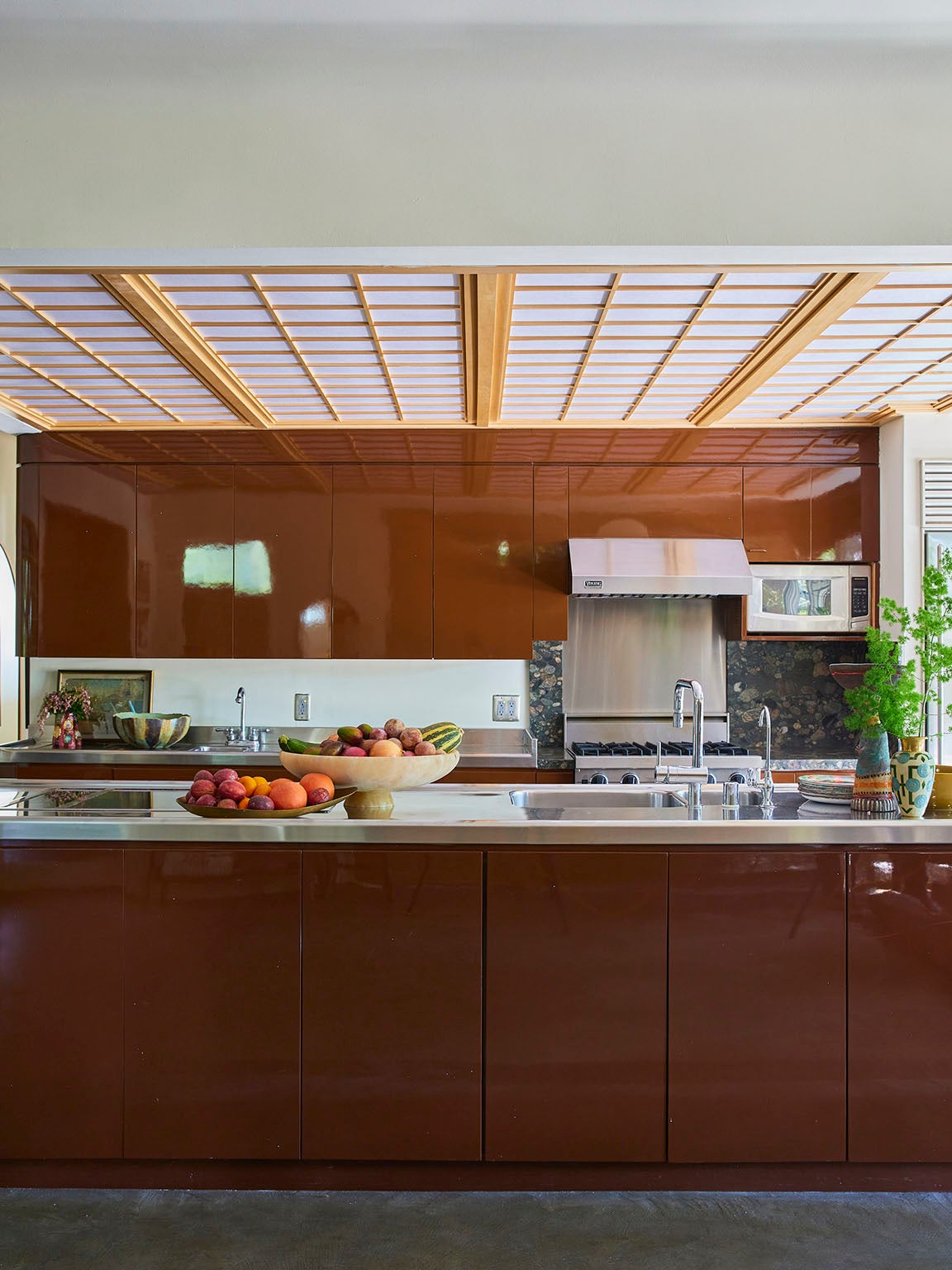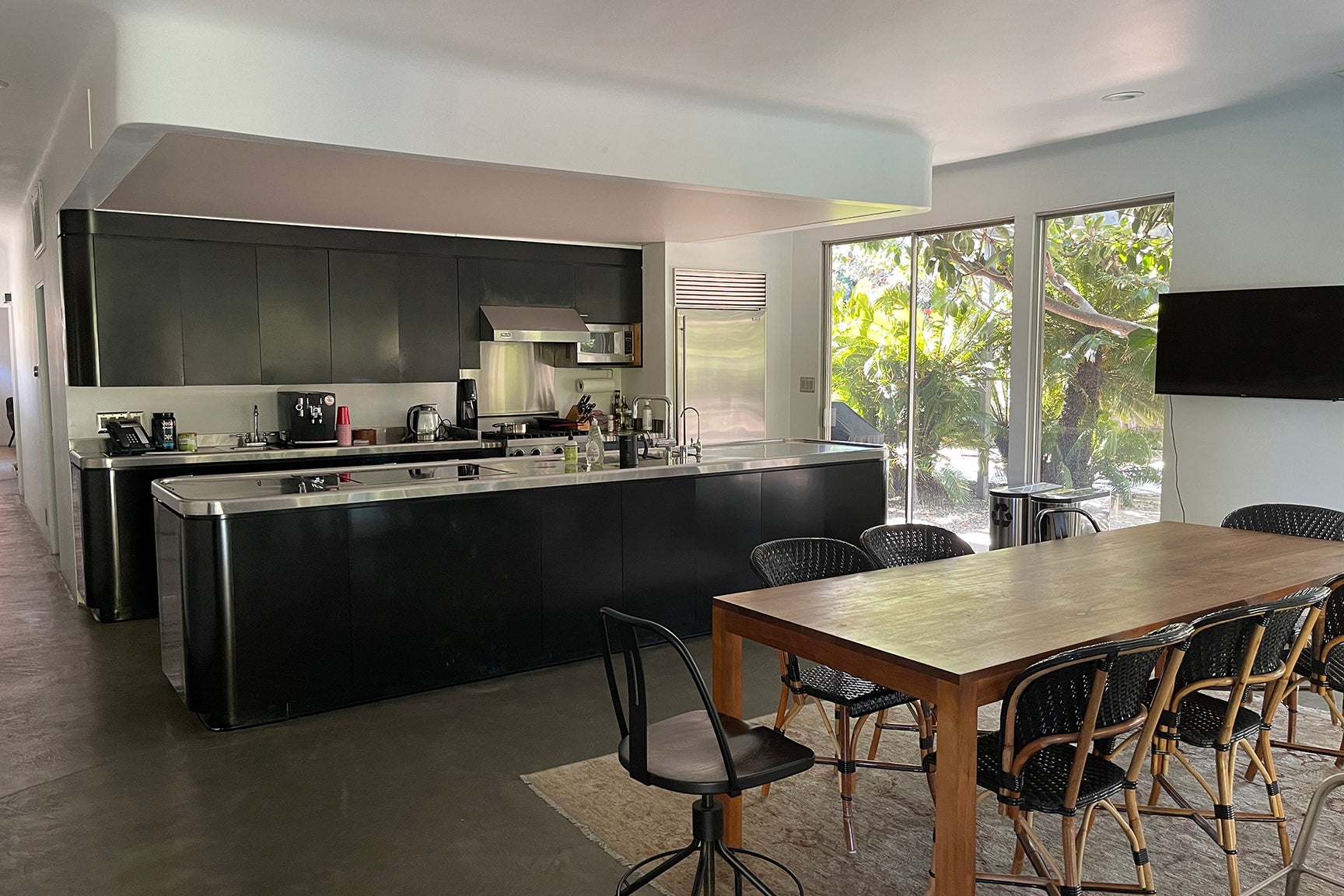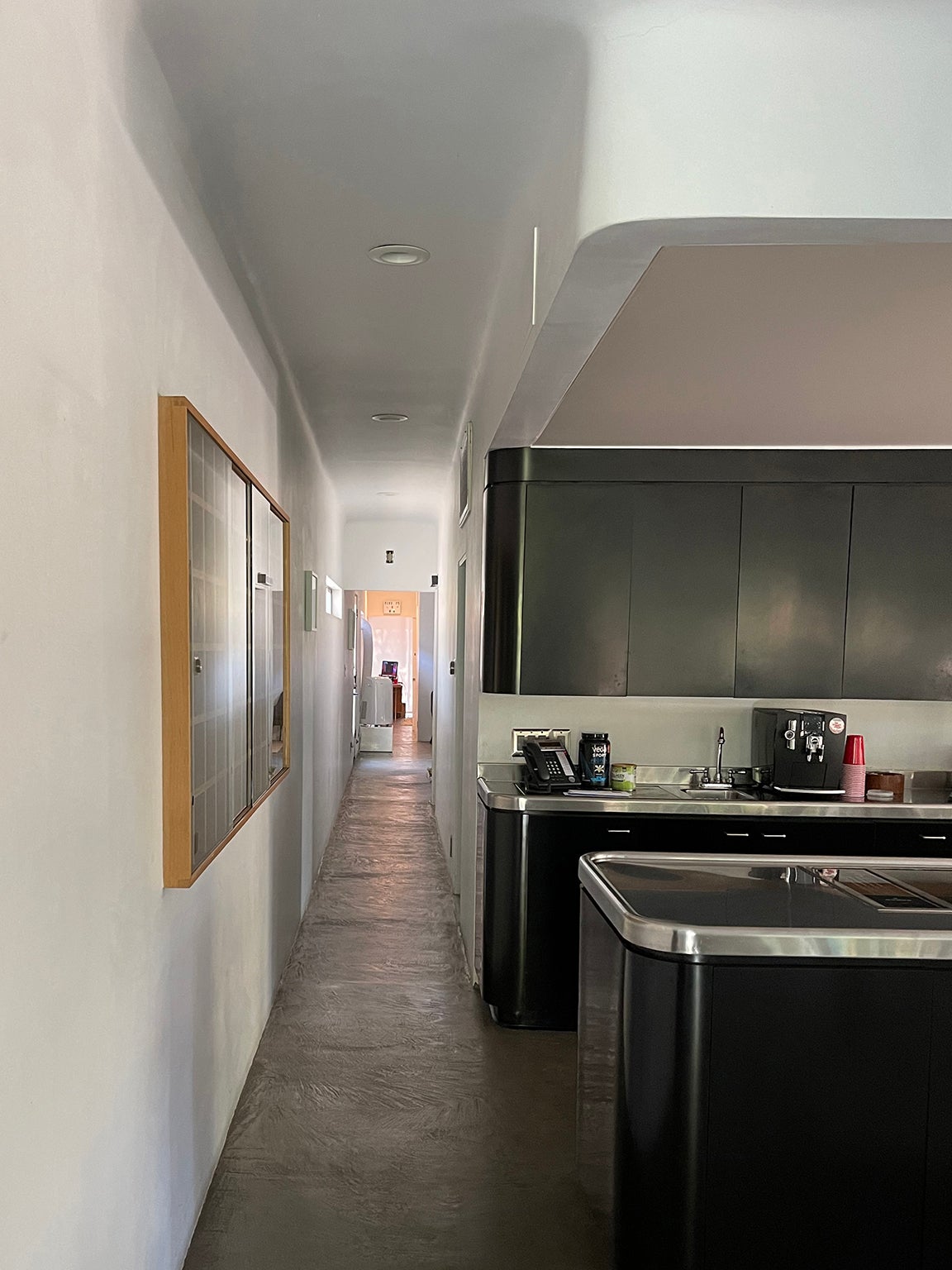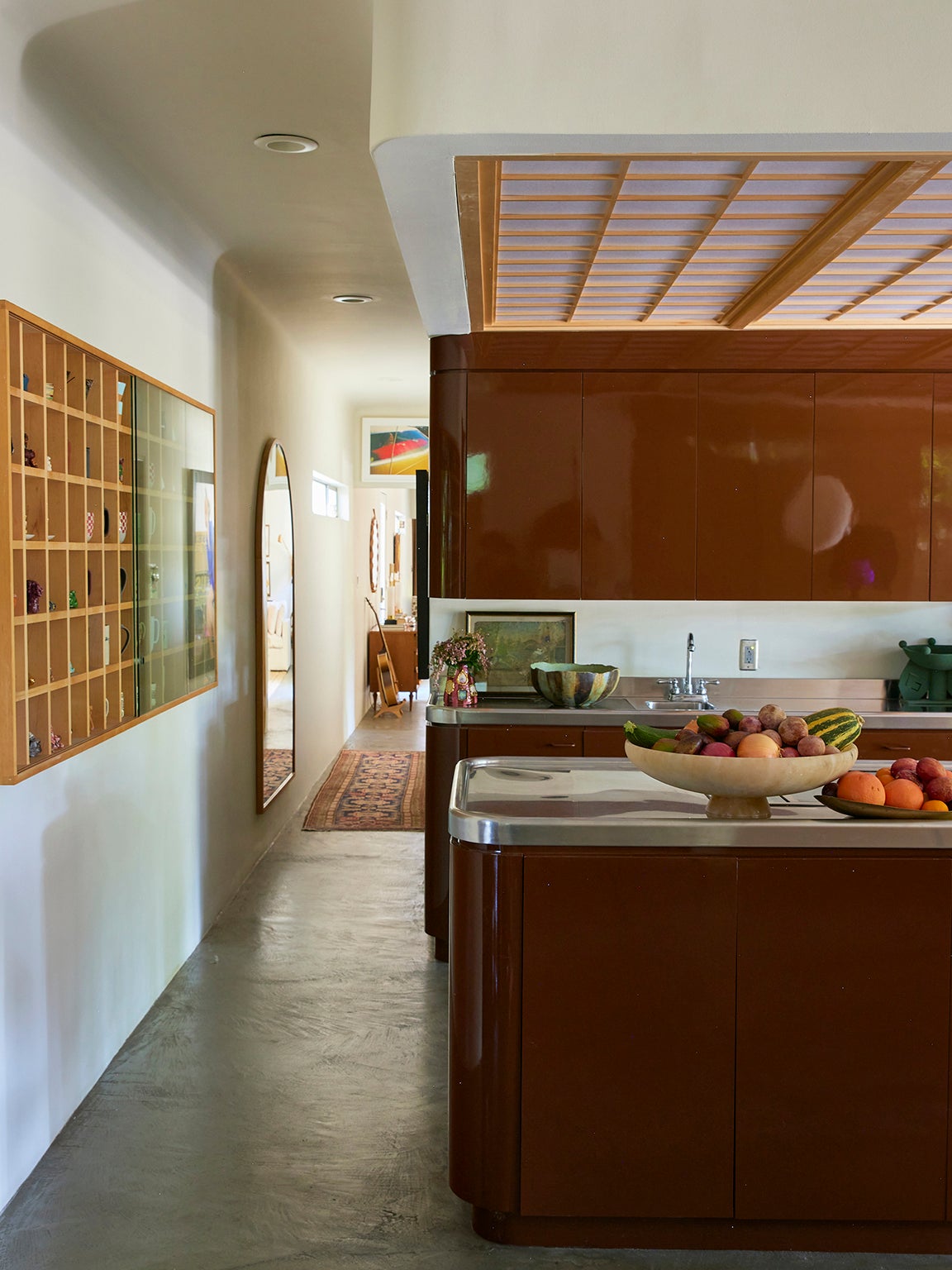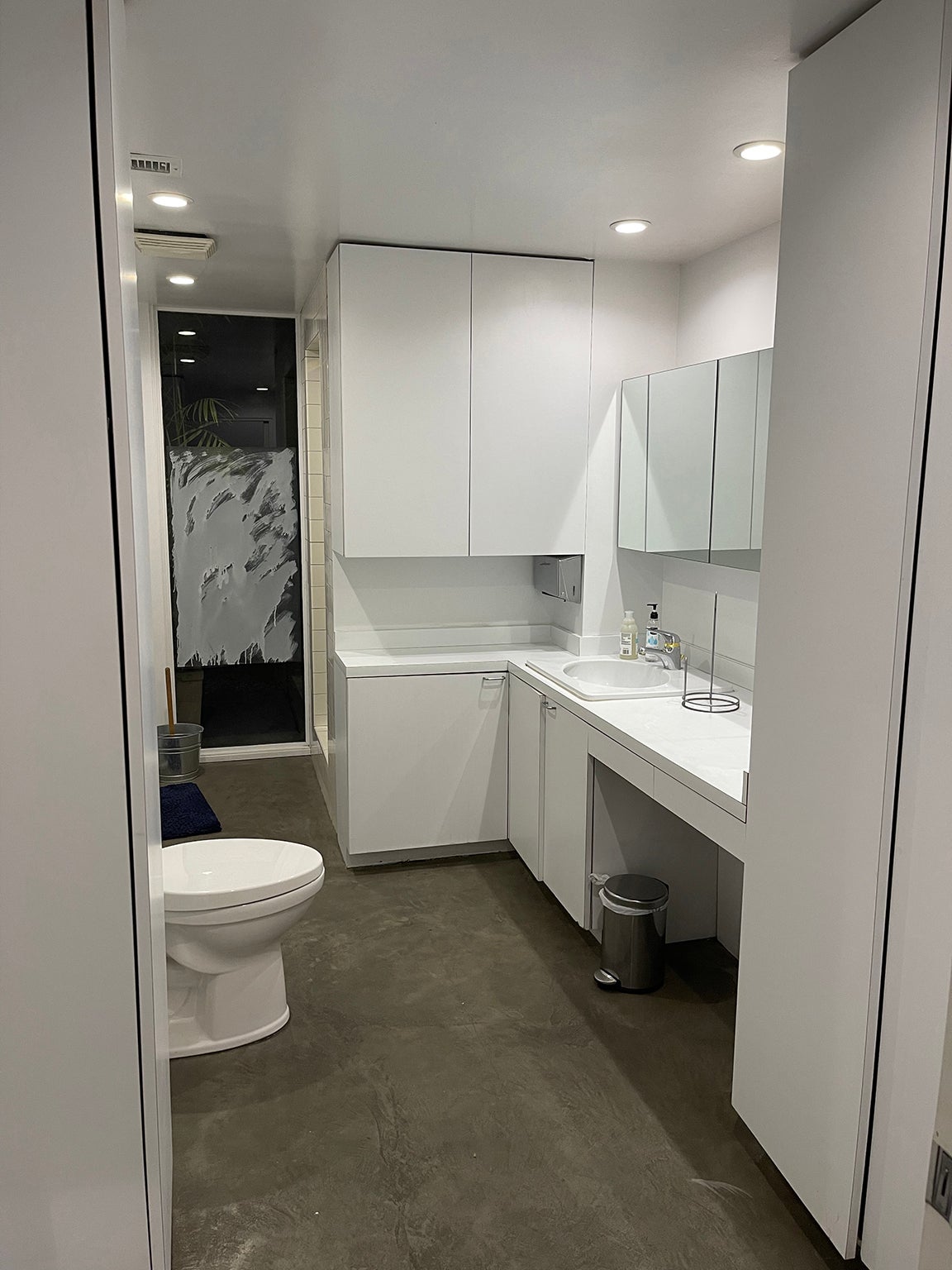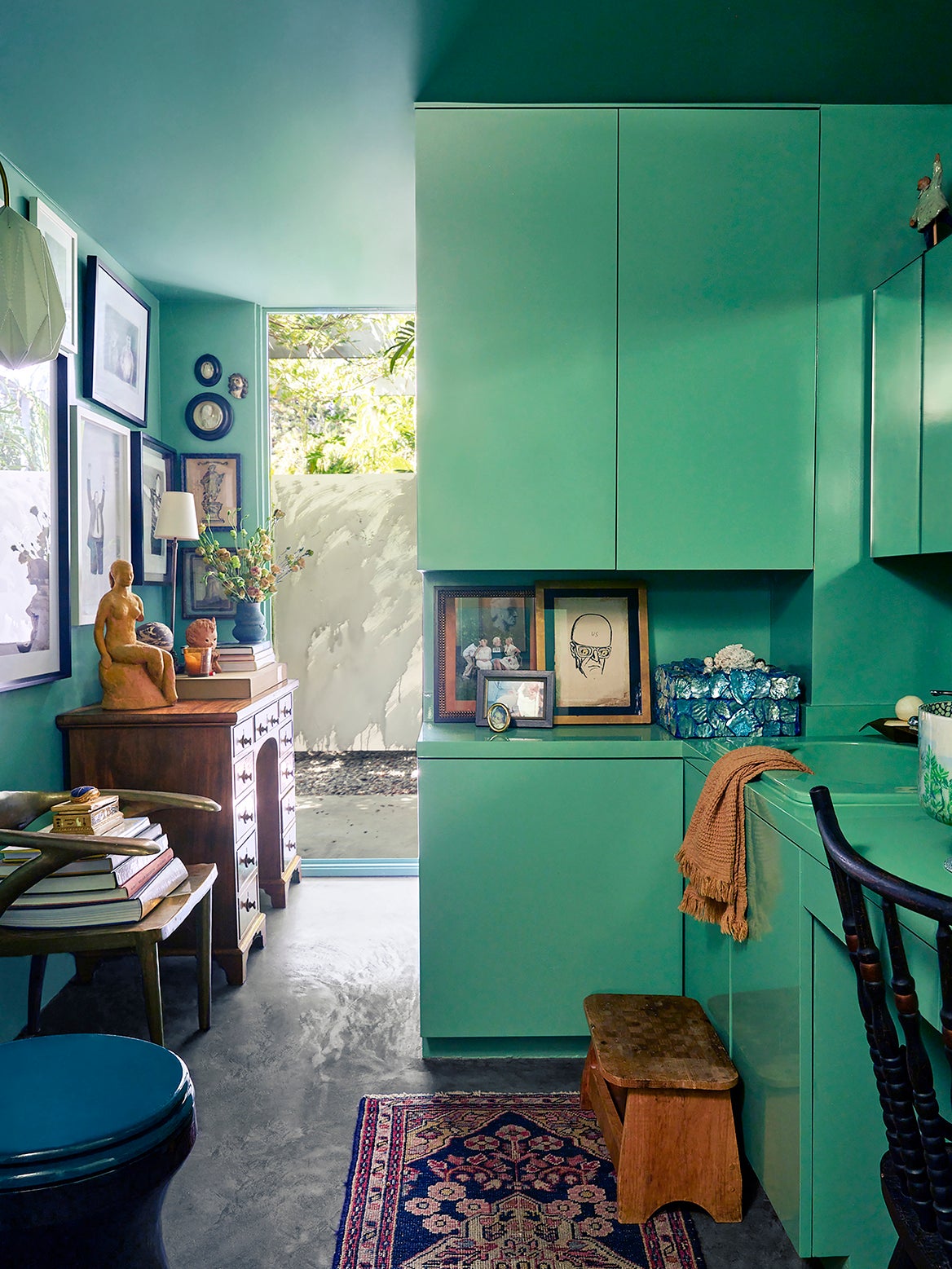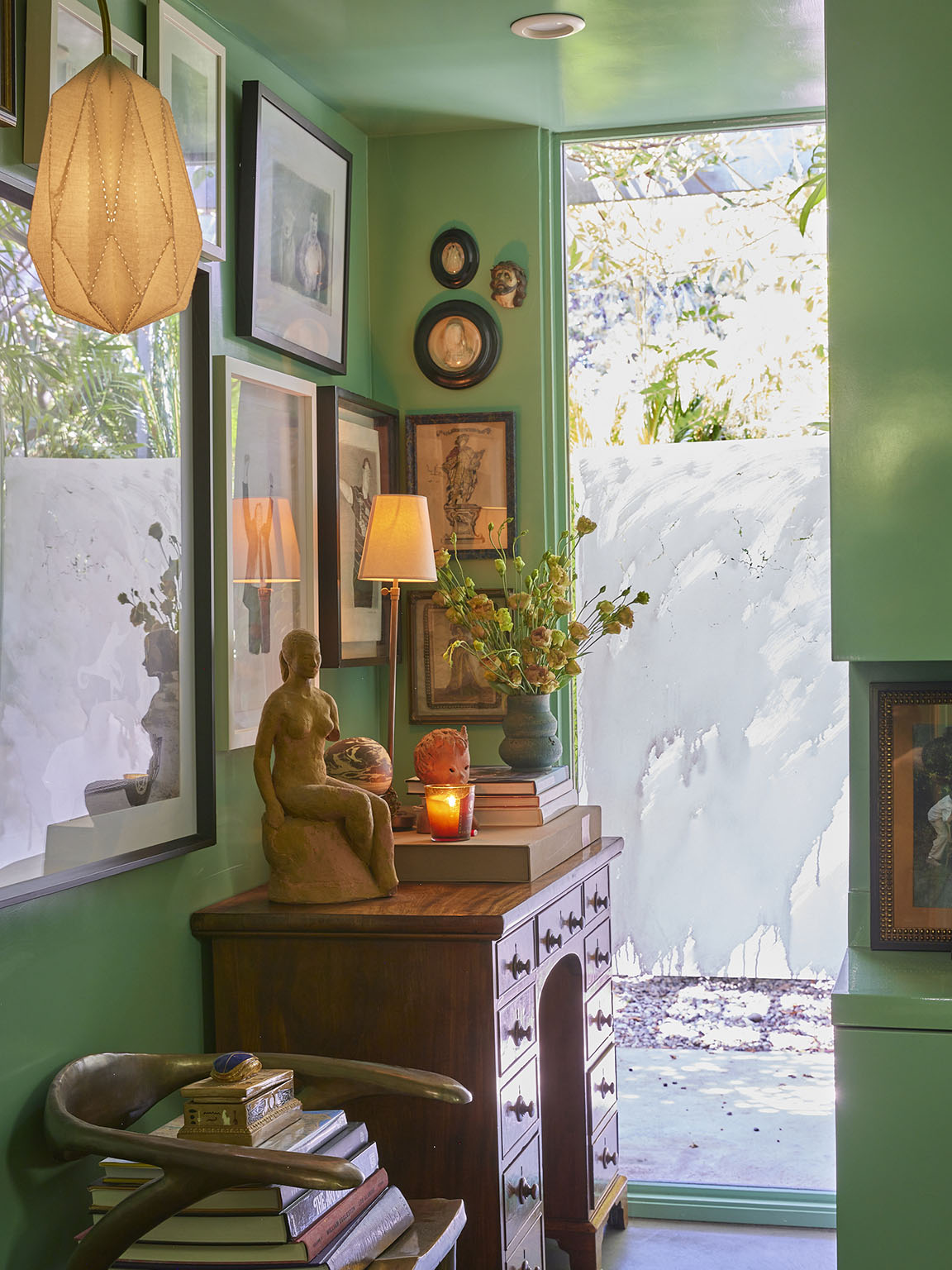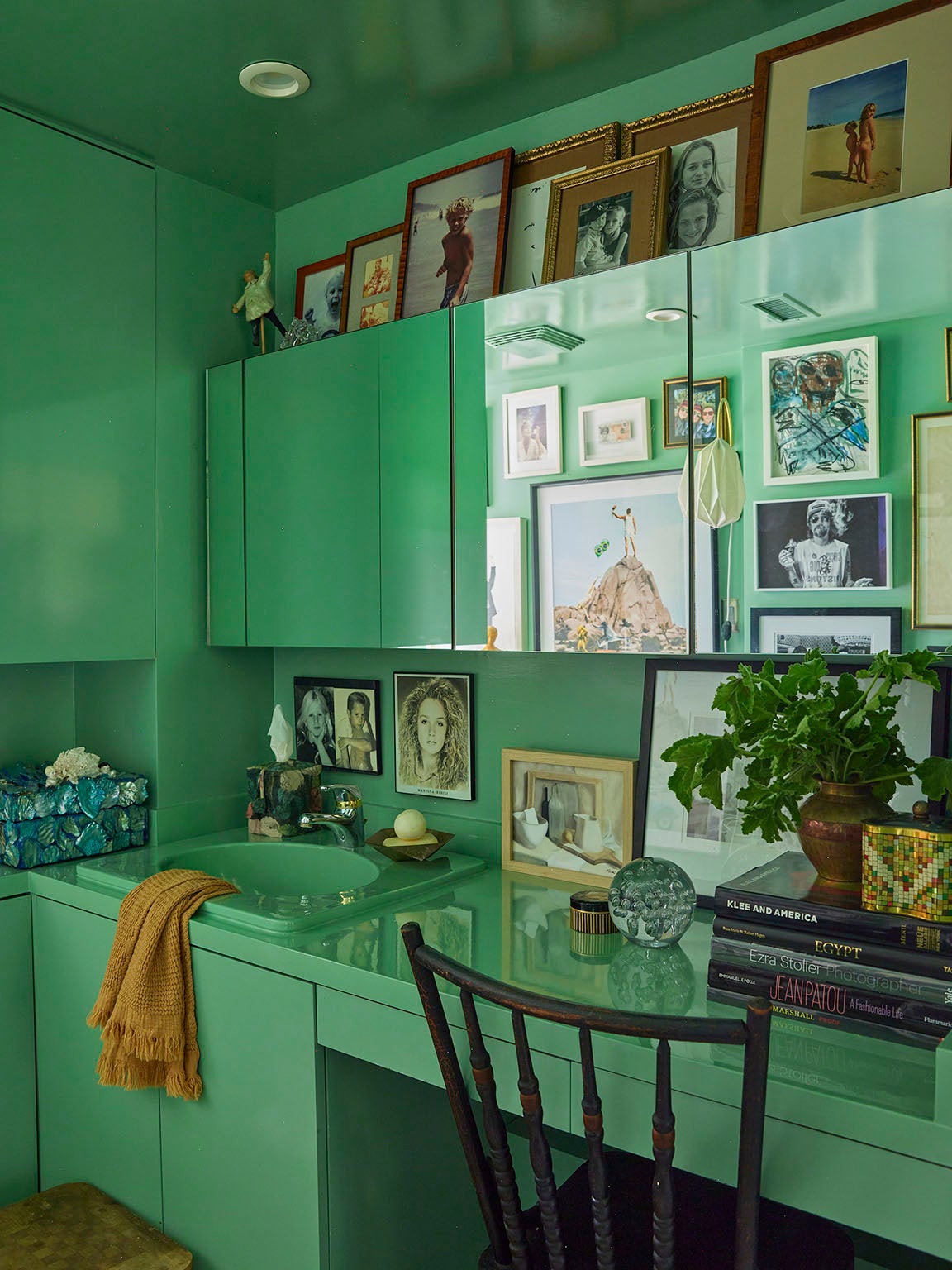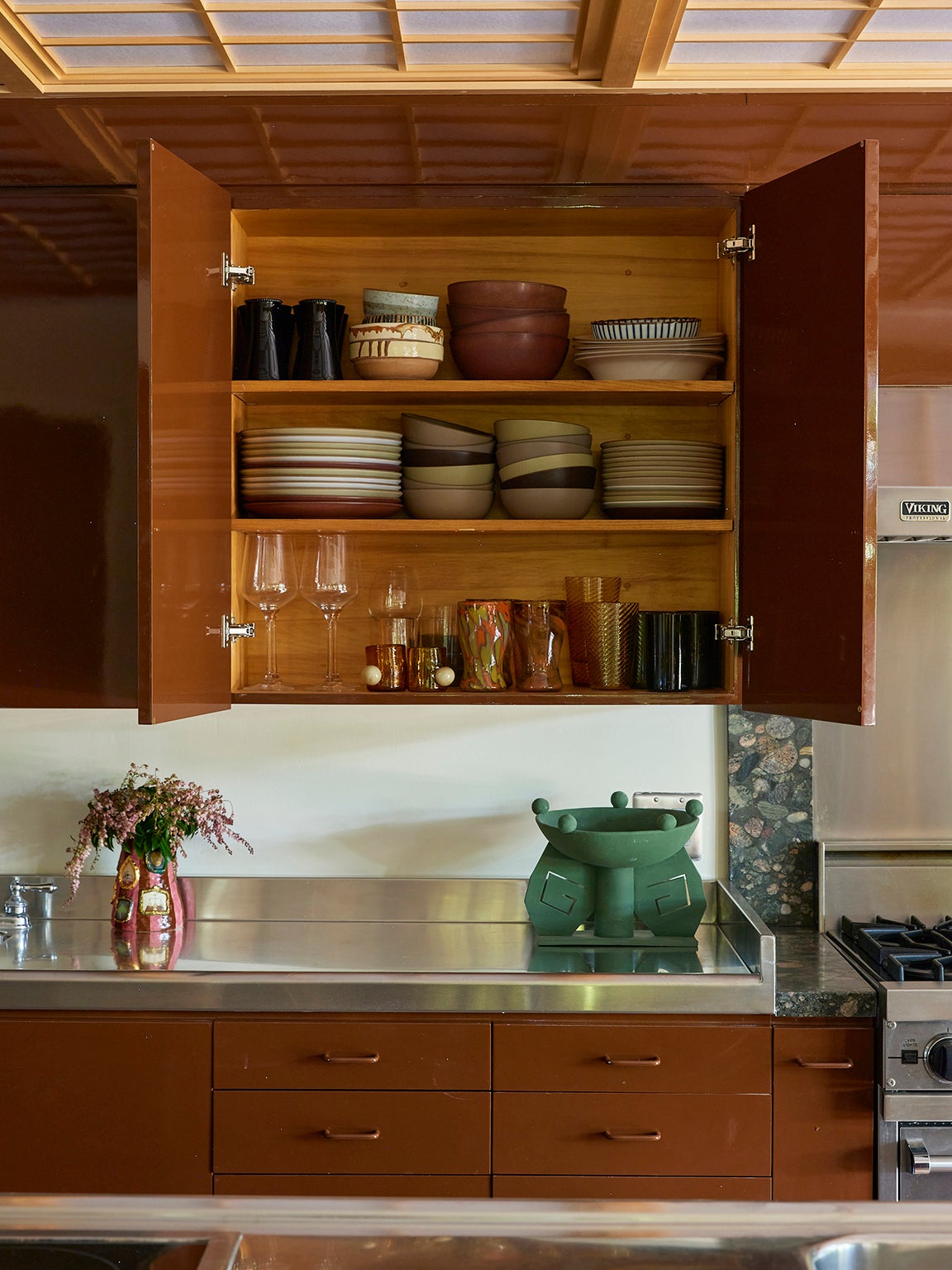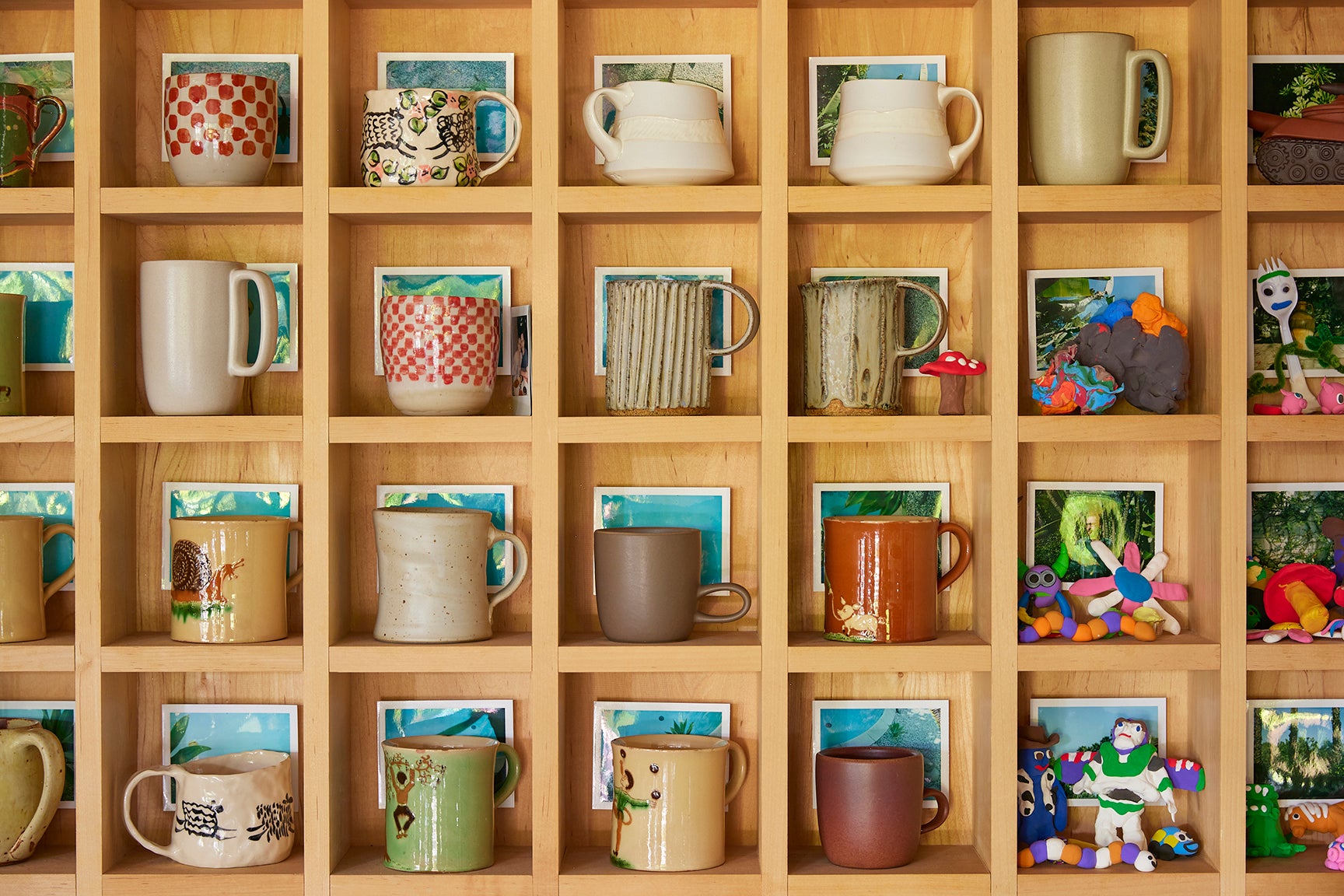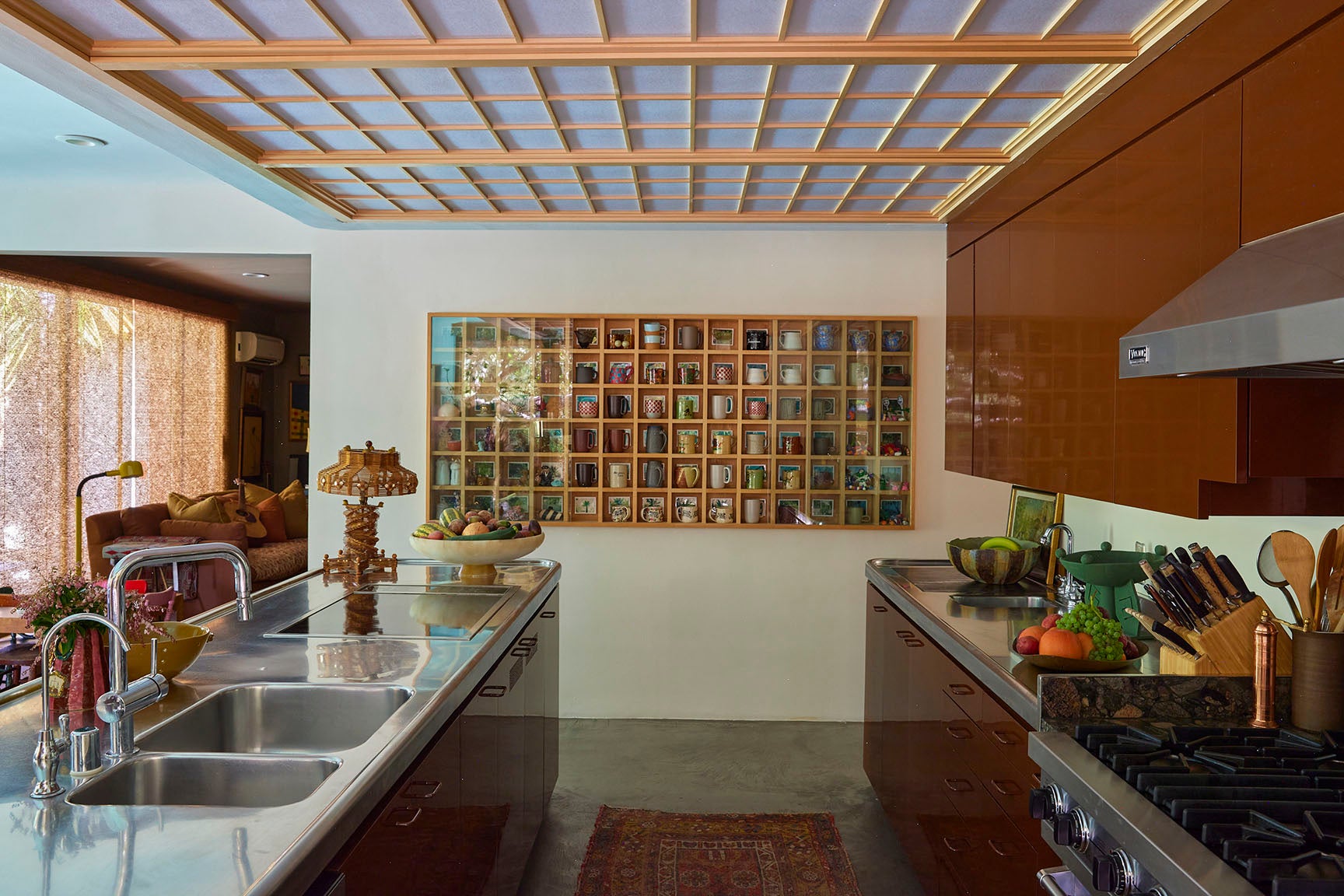When Gallons of Car Paint Meet ’70s IKEA Cabinetry, You Get High-Shine Perfection
We may earn revenue from the products available on this page and participate in affiliate programs.
More than a decade ago, Emily Ward—half of the design duo Pierce & Ward—and her partner, actor Giovanni Ribisi, purchased Japanese ceramic artist Mineo Mizuno’s mid-century gem in the Atwater Village neighborhood of Los Angeles. But they wouldn’t live there; the two-bedroom house, complete with a kiln and gallery space, would serve as a particularly epic office and studio for Ribisi. That is, until last year. Eager to downsize, Ward made the case for turning it into a retreat for them and their twins, Maude and Enzo. “It’s such an interesting juxtaposition to the way that Louisa [Pierce] lives and the way that I used to live,” Ward says; their Marin County home has a main house, bunkhouse, and guesthouse. “For some reason, it’s more inspiring to me not to have so much stuff and all of those extra rooms.”
You would think that the kitchen and primary bathroom’s existing 1970s IKEA cabinetry would be the first thing to go, but “when you’re designing spaces from scratch all the time, it’s really fun to just go with what you’ve been given,” she explains. Besides, it was in excellent condition and there was no denying the ample storage it provided. “The wood inside aged perfectly, and the old European hinges were made so much better than new ones,” Ward adds. So she set out to imbue the industrial interiors—think: concrete floors and stainless steel countertops—with the warmth she’s known for, but without a gut renovation. “I decided to lean into what felt organic and Japanese,” she says. The resulting transformation was so impressive, the kitchen graces the cover of our special collector’s Makeover issue, on newsstands now. Here’s how the designer reimagined both spaces with a few strategic upgrades.
The Power of (Car) Paint
Ward painted the existing black kitchen cabinet fronts in Benjamin Moore’s Chocolate Candy Brown, but not in just any finish. You can credit the super-high-gloss look to car paint. It took several attempts to get a proper color match, and they had to vacate the house for 30 days while the fumes dissipated, “but when you make it work, it’s so satisfying,” she says.
Play Matchmaker
In the bathroom, Ward took the same approach with the cabinetry—and pretty much every other surface. “I painted everything: the countertops, the sink, everything,” Ward says. This time, in Benjamin Moore’s Southfield Green, the same color as the walls of Pierce & Ward’s store. The refinishing pros at Miracle Method stuck to their tried-and-true process: First, they clean the surface to remove soap or mineral deposits, then cover it with a bonding agent to prevent cracking or chipping. Lastly, they apply the finish—in this case, car paint—using a fine-spray compressor.
Repair, Don’t Replace
Inspired by kintsugi, the Japanese art of repairing broken pottery with gold, Ward patched the kitchen backsplash behind the stove—“a really cool-looking Formica that was unfortunately broken”—with a slab of pebbly green marble. With the leftovers, she patched the gap in the floor where she had opened up the dining room to the living room. Waste not, want not.
Think Beyond Open Shelving
Ward and Ribisi inherited the wall-mounted display case from Mizuno, the previous owner. But while the artist had used it to hold tests of his ceramic work, Ward repurposed the unique piece for mug storage—84 of them, to be exact. “We drink a lot of coffee,” she says with a laugh. Her favorite cup gets a prime spot right in the middle, but she’s also given pride of place to ceramics that Ribisi’s mother and the couple’s children have made. “It was a little bit of an adjustment for me having all closed storage otherwise,” Ward admits. “So when I figured out that I could put the mugs in that one display case, it made my life so much better.”
Get Your Glow On
In its previous life, the kitchen ceiling was a sea of harsh fluorescent office lighting. Just as with the rest of the space’s imperfections, though, Ward and Ribisi chose to lean in rather than tear out. Custom shoji screens now diffuse the light, another nod to the house’s Japanese vibe.
The post When Gallons of Car Paint Meet ’70s IKEA Cabinetry, You Get High-Shine Perfection appeared first on domino.

